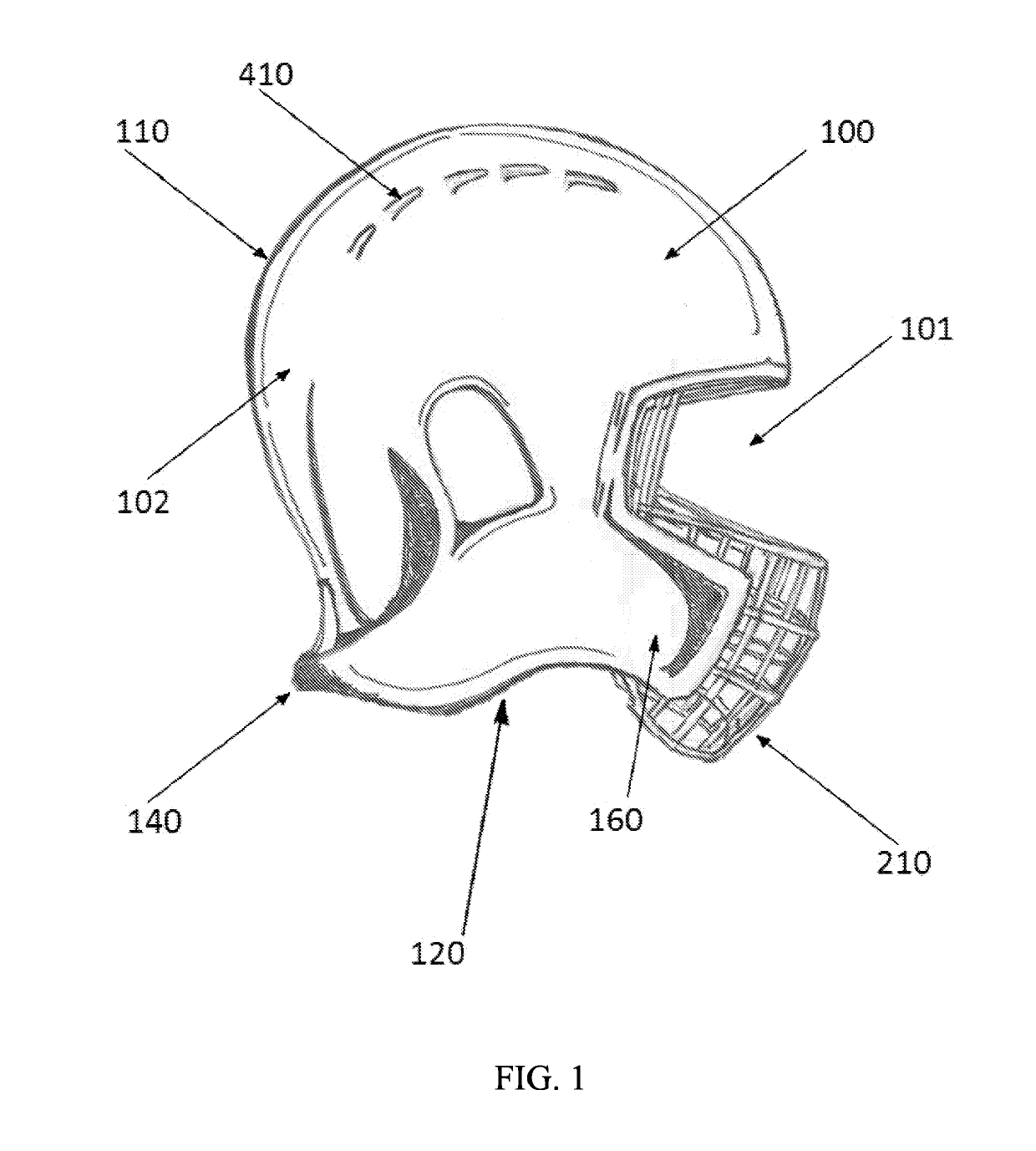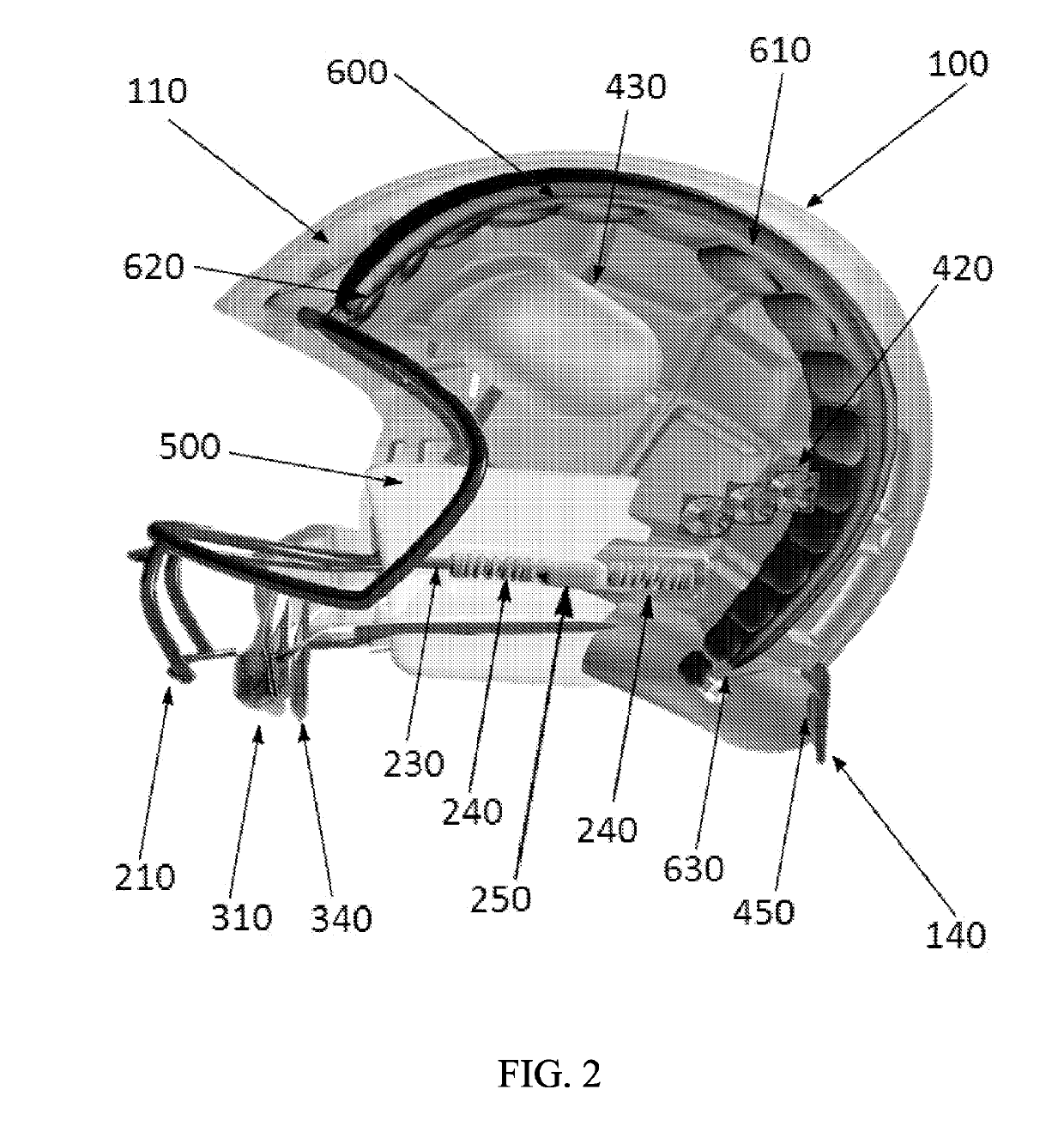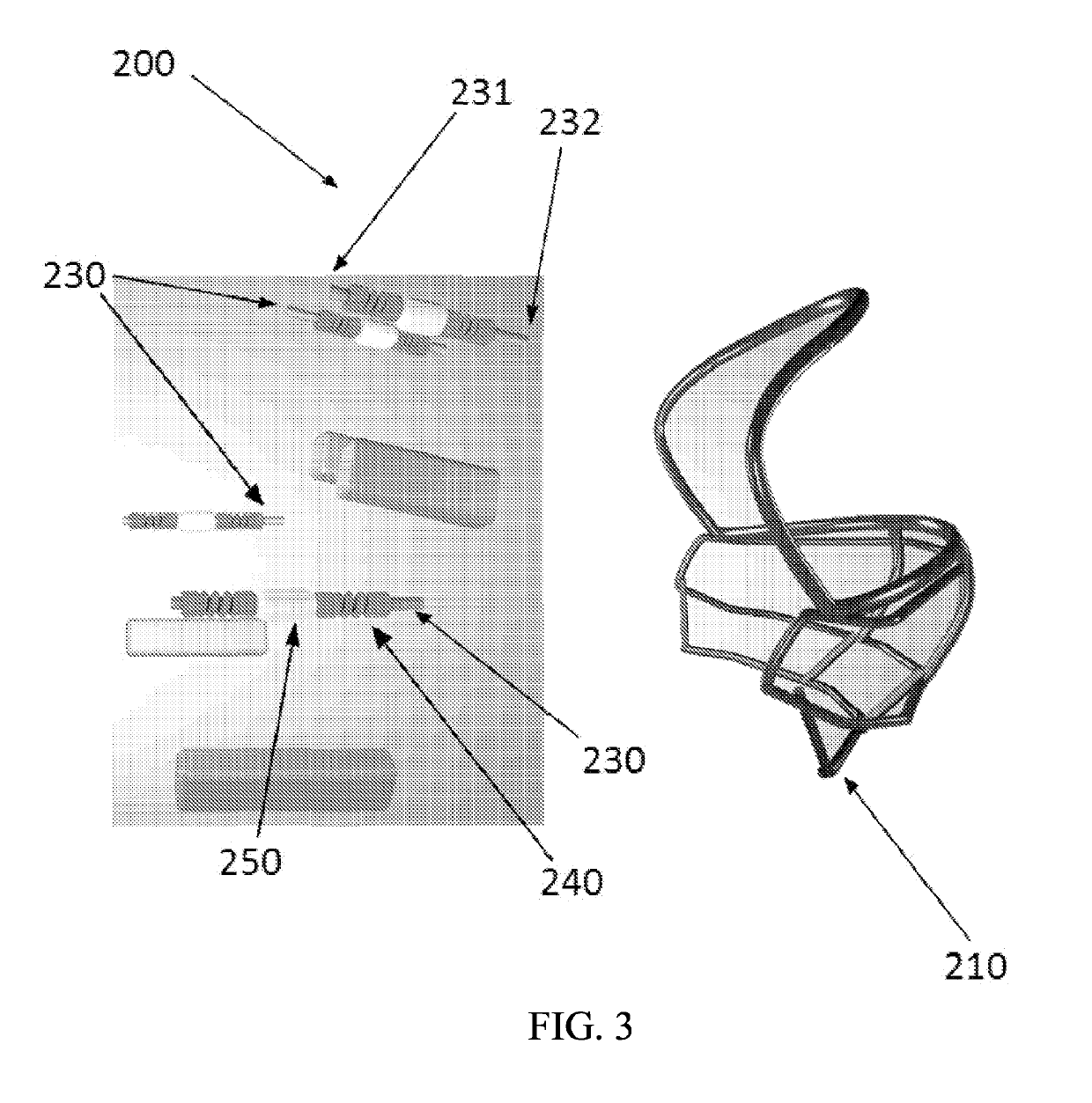Physiological and neurological monitoring sportswear
a physiological monitoring and sportswear technology, applied in the field of physiological monitoring, can solve the problems of deteriorating the health of players, helmets are not capable of preventing concussions, and relatively common injuries, so as to prevent concussions, reduce the likelihood of neck and cranial injuries, and protect the surfa
- Summary
- Abstract
- Description
- Claims
- Application Information
AI Technical Summary
Benefits of technology
Problems solved by technology
Method used
Image
Examples
Embodiment Construction
[0046]In the summary above, in the description and appended claims below, and in the accompanying drawings, reference is made to particular features of the disclosure. It is to be understood that the disclosure of the product in this specification includes all possible combinations of such particular features. For example, where a particular feature is disclosed in the context of a particular aspect or embodiment of the disclosure, or a particular claim, that feature can also be used, to the extent possible, in combination with and / or in the context of other particular aspects and embodiments of the disclosure, and in the disclosure generally.
[0047]The term “comprises” and grammatical equivalents thereof are used herein to mean that other components, structures, steps, etc. are optionally present. For example, an article “comprising” (or “which comprises”) components A, B, and C can consist of (i.e., contain only) components A, B, and C, or van contain not only components A, B, and ...
PUM
 Login to View More
Login to View More Abstract
Description
Claims
Application Information
 Login to View More
Login to View More - R&D
- Intellectual Property
- Life Sciences
- Materials
- Tech Scout
- Unparalleled Data Quality
- Higher Quality Content
- 60% Fewer Hallucinations
Browse by: Latest US Patents, China's latest patents, Technical Efficacy Thesaurus, Application Domain, Technology Topic, Popular Technical Reports.
© 2025 PatSnap. All rights reserved.Legal|Privacy policy|Modern Slavery Act Transparency Statement|Sitemap|About US| Contact US: help@patsnap.com



